|
Monday, July 30, 2012
Progress Notes
A few weeks ago I was asked by Charis Patires - Lake Lifestyles and Vacation News editor of Lake Media to write a photographic tour of Miller County. Since many of our readers are from outside this area and probably aren’t familiar with the local publications I am going to present here on the website what I prepared for Charis. This particular effort is not meant to be a complete history of the county by any means; it is only a superficial abbreviated overview emphasizing photos more than narrative:
Photographic Tour of Miller County
Entrance Sign at Tuscumbia (photos 01 and 02)

01 Miller County History Sign - Front
|

02 Miller County History Sign - Back
|
Click images above for larger view |
These photos are of a sign, front and back, located a short distance north of Tuscumbia on Highway 52 which present a short history of Miller County.
The Osage River (photo 03)
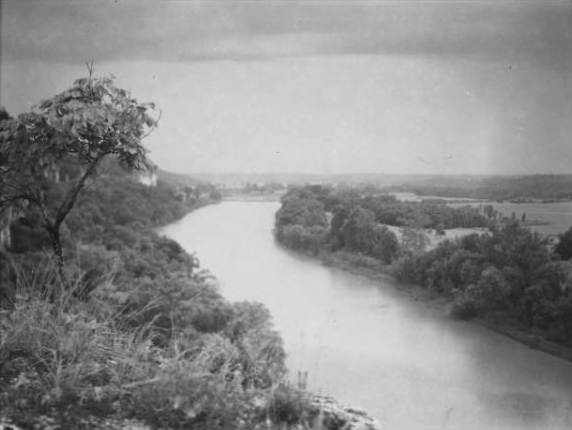
03 Osage River
Early in this area’s history, the Osage River was the primary means of transportation to Miller County for many of the early settlers who arrived here. Even in later years after overland trails were developed steamboats were used on the Osage River as a very important means of delivering the goods and supplies necessary for the small settlements along the river’s banks.
Steamboats (photo 04)
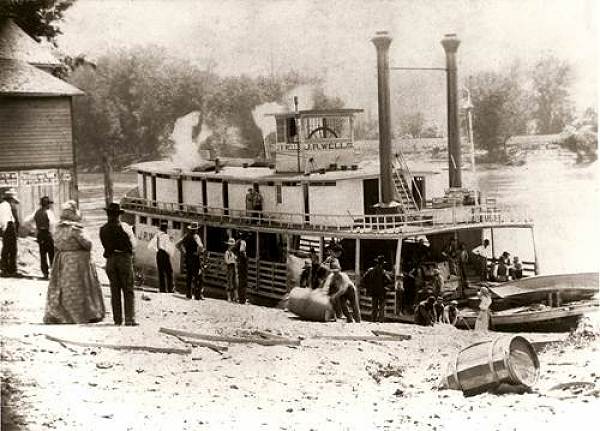
04 J.R. Wells unloading at Tuscumbia Landing
The most famous steamboat of the many which traversed the Osage River was the J.R. Wells, named in honor of the President of the Anchor Milling Company of Tuscumbia. In the photo one can observe that many local residents came down to the landing when the boat arrived. It always sounded a steam operated horn to announce its arrival a short distance downstream before docking.
Ferries (photo 05)

05 Ferry Landing at Tuscumbia looking north across the River
Pictured here is the ferry landing at Tuscumbia. The ferry was a flat board type of boat which was used for many years before the first bridge was constructed across the Osage River. Other ferries later were used at Bagnell up the river and St. Thomas down the river from Tuscumbia.
Bridges (photo 06)
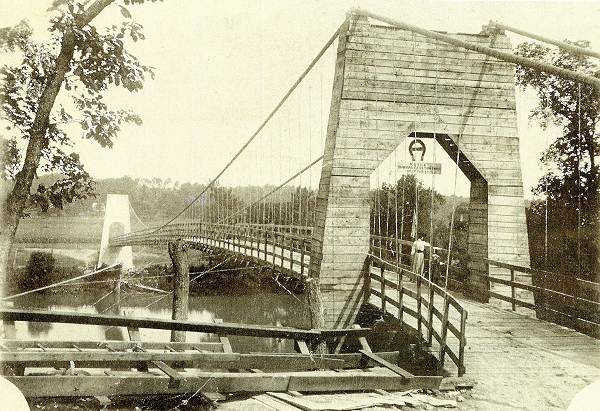
06 Suspension Bridge at Tuscumbia 1905 - 1933
The first bridge across the Osage River in Miller County was a swinging bridge constructed in Tuscumbia by Joseph Dice of Warsaw in 1905. It was the largest of the six other swinging bridges he built in Miller County, three of which are still standing. The swinging bridge in Tuscumbia was replaced in 1932, and the 1932 bridge in turn was replaced last year by a new bridge of modern construction.
Trains (photos 07 - 10)

07 Missouri Pacific Engine
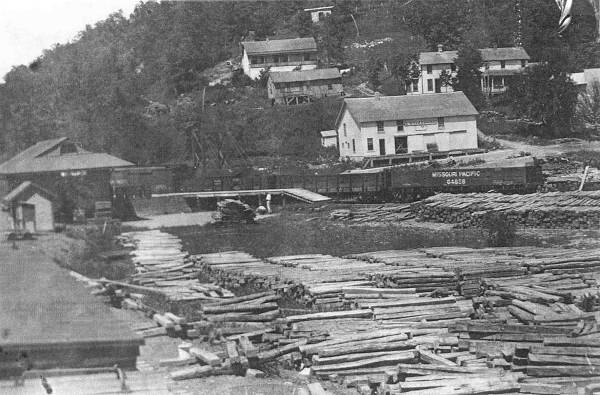
08 Bagnell Tie Yard
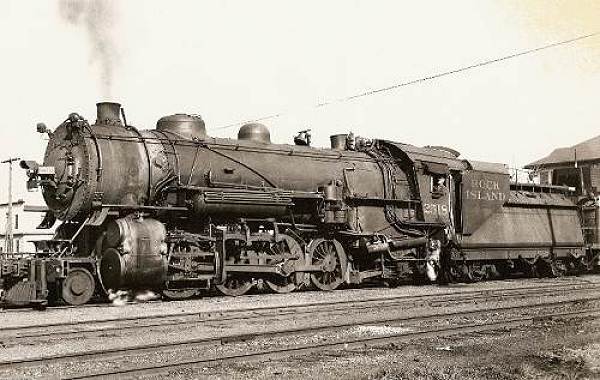
09 Rock Island Engine

10 1909 - Rock Island Station Eldon
The first train line to be constructed Miller County was the Missouri Pacific under the direction of William Bagnell in 1882. Mr. Bagnell was a railroad executive whose responsibility was to buy oak wood ties for the construction of the company’s network of railroads throughout the nation. He chose a site on the Osage River about twelve miles upstream from Tuscumbia as the location where he wanted ties to be delivered for pickup and transportation by his train line to the various sites in the nation where the railroad line was expanding. The small settlement later was named Bagnell in deference to this Missouri Pacific executive.
Hundreds of thousands of ties were cut and shaped by “tie whackers,” farmers who lived near or on the Osage River upstream from the town of Bagnell. These very hard working and “tough” individuals would pull the ties by horses to the river bank where they were fastened together in long lines to be floated down the river to Bagnell. At times the train yard in Bagnell was filled with thousands of ties as can be seen in the photo above.
The second and eventually more important train line was the Rock Island which came through Eugene and Eldon on its way to Kansas City. The huge train station built by the Rock Island in Eldon pictured in the photo now no longer is present, but many are living today who can recall how busy it once was.
Caves (photo 11)
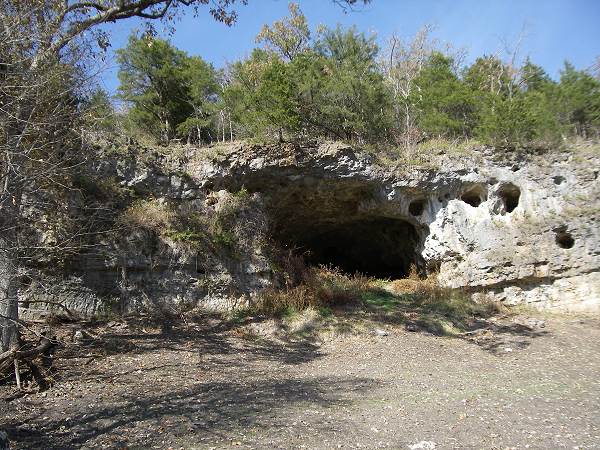
11 Wilson Cave
Missouri is sometimes called the “Cave State” because of the large number of caves found here, especially south of the Missouri River. Miller County has many caves any of which could be featured. However, the one with the most interesting historical background is Wilson Cave, located south of the Osage River, and named after John Wilson, one of the county’s earliest settlers. John demanded that after he died not only he be buried with a jug of whiskey in one of the small holes in the rock surrounding the cave’s entrance, but also seven years later a celebration and dance were to be held at which time the whiskey would be drunk! Unfortunately, the Civil War intervened and by the time one of the relatives returned to the burial site the whiskey jug was empty (John was still there, however)!
Schools (photo 12)
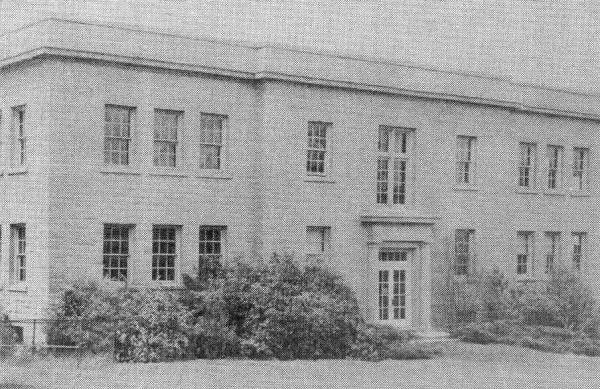
12 Iberia Academy Classroom Building
Early on the first schools in Miller County had only one room, usually made of logs, and were required to be located within a three mile radius of students in the district. No high schools were built initially, although a couple of “academies” were built in the late 1800’s for those who wanted to continue their education. The best known and long lasting of these was the Iberia Academy founded in 1891 by George Byron Smith of Illinois who was its director. The academy was an important addition to the educational resources of the county providing a more enhanced education for young students of the area. Probably due to Professor Smith’s retirement a few years earlier, the academy eventually closed in 1951.
Bagnell Dam (photo 13)

13 Bagnell Dam Nearly Completed
The construction of Bagnell Dam in Miller County, finished in 1931, was one of the most important contributions to the county’s growth and progress. The project was begun near the beginning of the “Great Depression.” Because of the availability of jobs and a regular pay schedule, many local residents as well as temporary migrants from other states were able to earn some of the income needed to support their families. Nowadays, the Lake of the Ozarks area created by the dam continues to provide employment as well as tax support to Miller County and other counties which border the lake.
Events (photo 14)
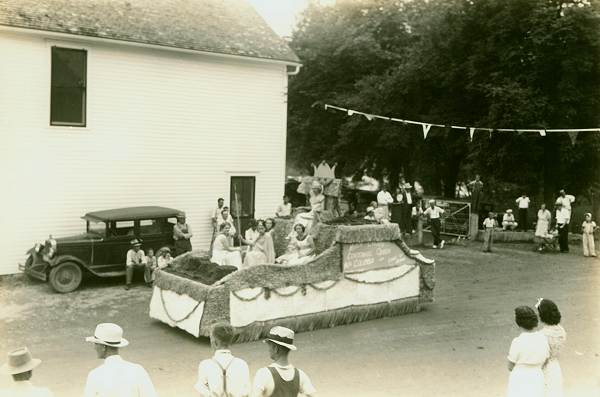
14 Queen's Float - Juanita Messersmith - Miller County Centennial
One of Miller County’s most well attended and important events was the Centennial Celebration of 1937 held in Tuscumbia, the county seat. The Celebration entertained more people than any other in the history of the town, having multiple attractions including a large parade, speeches by notables of the day, a Centennial Queen Contest, and ended with a religious ceremony on Sunday, both Protestant and Catholic. The Queen of the Centennial was Juanita Messersmith, pictured in the photo above.
Miller County Courthouse (photos 15, 16 and 17)
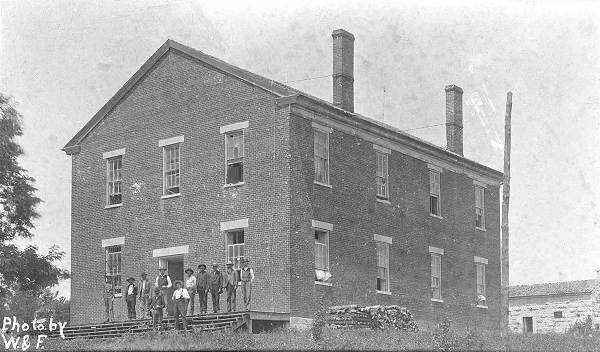
15 Second Miller County Courthouse - 1859
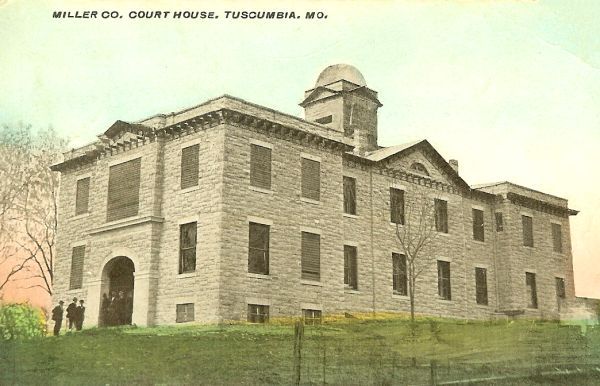
16 Third Miller County Courthouse - 1910
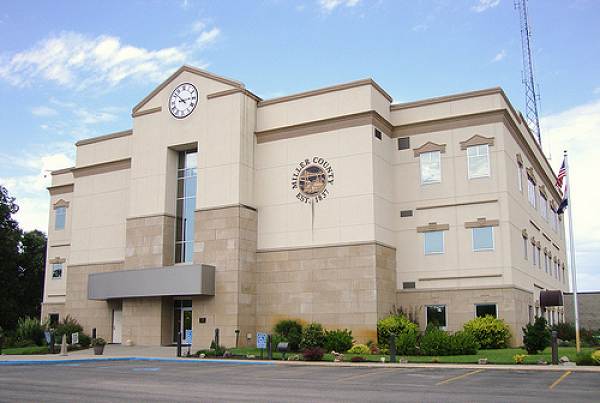
17 Current Courthouse - 2004
Miller County’s first courthouse was a log structure built in Tuscumbia, the county seat. The second courthouse was of brick, constructed in 1859; the third courthouse, which is still standing, was built in 1910 and the present courthouse was constructed in 2004.
Miller County Mills (photo 18)
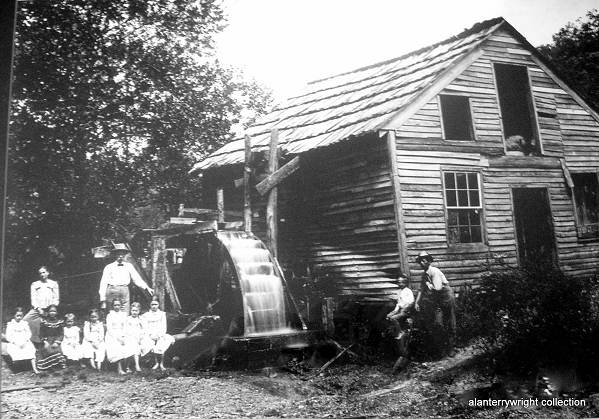
18 Wright's Carding Mill
The Green Lee Wright mill located on the Little Saline Creek was one of several water powered mills located in the county. In the photo some of the individuals can be identified. Sitting on the far left is Gardie Swanson. Gardie was handicapped by the residual of polio having weakened severely her right leg. She was a first through third grade school teacher at Tuscumbia for many years. Both my mother as well as I were among those who were some of her students. Standing behind the sitting group is William Harrison who later became the President of the Citizen’s Bank of Eldon. On the far right standing is the owner of the mill, Green Lee Wright with his young son, Charles Wright.
In the historic church section of our museum we have photographs of five preachers of the past who were well known throughout the county. The committee in charge of this section could have selected other additional ministers well known through the years as being worthy of mention but felt the ones selected had certain qualities of interest that deserved to be presented. This week I am going to present a short synopsis of each of these ministers with references to which you can refer for more detail.
Charles Sooter
One of the best known Miller County ministers of the past was Charles Sooter (photos 19 and 19a).
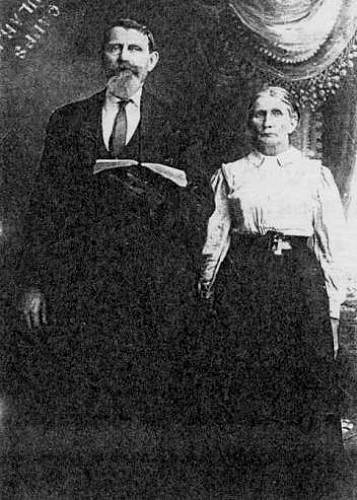
19 Charles and Jane Alice Carson Sooter
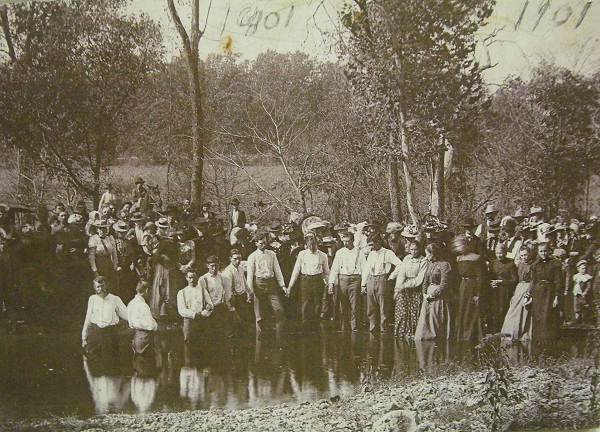
19a Charles Sooter Baptising Ben McDonald - 1901
I have presented his story on a previous Progress Notes.
Charles was perhaps the most influential of all the preachers to minister in our county considering he started thirteen churches of the “New Light” Christian movement. He preached over four thousand funerals and baptized thousands of Miller Countians during his lifetime.
Here is what Peggy Hake wrote about the New Light movement:
“The Christian New Light Church was organized in the 1890’s and their first meetings were held in the G.A.R. (Grand Army of the Republic) Hall which is still standing on the original site today and is used by the Masons and the Order of the Eastern Star for their meetings. Some early pastors of this church were C.M. and Ned Sooter and John Aust, the father of Uncle Charley Aust and Aunt Sally Jones whom I remember so well as I was growing up in the Iberia area.”
James Brown
The second minister featured in this section is James Brown, who lived on the Osage River near where Route D is located now. Here is a photo of him with his son, William, and granddaughter Lena Brown Bear and her daughter, Sandra (photo 20).
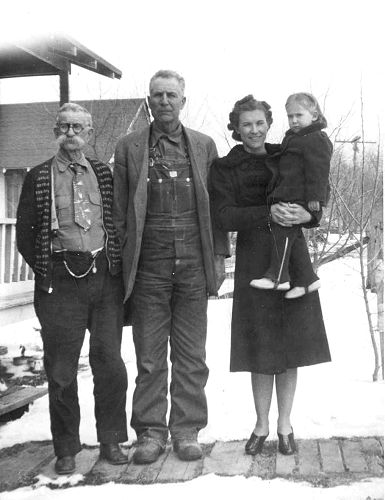
20 James Brown with son Will and granddaughter Lena
We also have on display his frock coat (photo 21).
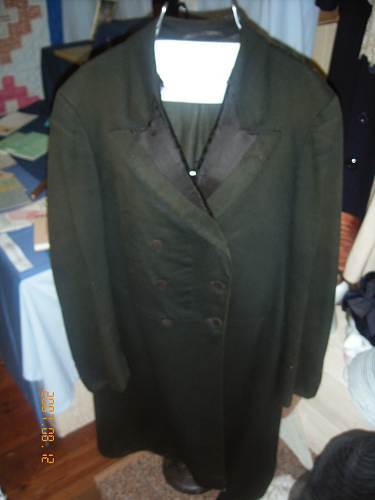
21 Frock Coat of James F. Brown
James was presented here because he was an example of the circuit riding (as on a horse) preacher who travelled throughout the northern Ozarks in the late 1800’s and early 1900’s. A short paragraph about him was provided us by his grandson, Earl Brown.
“While I was still a very young child, into the home of my parents came my paternal grandfather to live for many years with our family. Having felt the urge to expound the scriptures, he practically dropped the plow lines to his horses in the furrow where they stood and began giving vent to his mind through his lips, instead of his strength through his hands. To the best of my knowledge, he began his ministry in the Missionary Baptist faith. Thereafter, he became a wandering preacher in the hills of the northern Ozarks to scattered congregations that would gather to hear him in school houses, brush arbors, private homes and other such places which were open to him.”
John Aust
A third preacher well known years ago and featured here in our group of important Miller County preachers of the past was John Aust (photo 22).
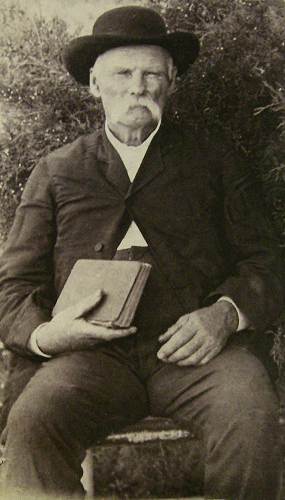
22 John Aust
He was a “New Light” preacher and had much in common with Charles Sooter. In the website article I cited above in which Peggy Hake wrote about the “New Light” movement she included information about John Aust.
Luke Erastus Melton
One of the most admired preachers in our county was Luke Erastus Melton (photo 23).
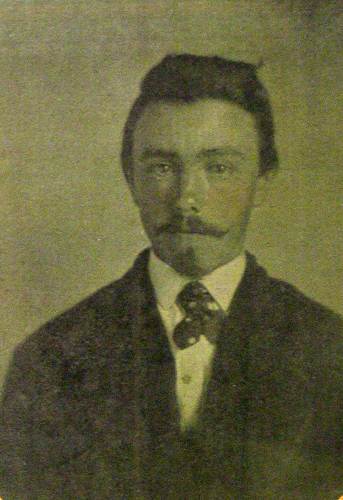
23 Luke Erastus Melton
Here is what Mary Emma Boyce, daughter of Charles Boyce and wife of Green Lee Wright had to say about him.
“Luke Melton was the man all the folk thought the very best. He baptized the sinners when they requested the rite. He officiated at marriage ceremonies-on foot or "hoss back"-tying the nuptial knot for more couples alter bound than anyone else in the county. Too bad death claimed Luke when he should have had several more years in front of him.”
Luke Erastus Melton was himself a son of a circuit riding minister, John Harris Melton, who had settled on the Saline Creek in the mid 1800’s. You can read more about the Melton family at this page on our website.
Robert Todd
A really interesting story is that of Robert Todd, born in Arkansas, who became a very well liked Baptist minister (photos 24 and 25).
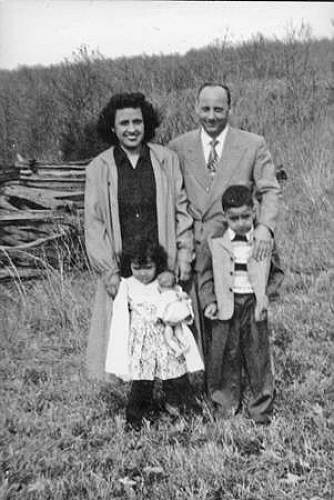
24 Rev. Todd Family: wife Minerva, daughter Kathy and son Dan - 1951

25 Robert Todd baptizing daughter Kathy in Osage River
Robert came to Tuscumbia in 1951 where he raised his children during their early years.
I remember well Brother Bob as he lived across the road from me in Tuscumbia when I was a young boy. His wife was Hispanic but I never heard her speak anything but English. Robert often baptized in the Osage River which was just a short walk from the original Baptist Church in Tuscumbia (photo 26).

26 Tuscumbia Baptist Church
Robert’s son, Dan Todd, sent us a heartwarming letter on the occasion of Robert’s death in 2007 which you can read here on our website.
Also in our church display is a beautiful example of a stained glass window which has presented to us a mystery (photo 27).

27 John Billington Window
No one knows who donated the stained glass window nor from where it came, whether a church or some other structure. Since stained glass windows mostly were found only in churches we assumed that was its origin. And another mystery is that the glass window has engraved at the bottom the words: “In Memory John Billington.” Up to now we have never learned who was “John Billington,” at least, a person with this name in Miller County. However, I did an internet search and found there is a John Billington who is an expert regarding stained glass and who has the following bio:
“About the Author: John Billington is the president and CEO of Five Rivers Inc., a leading online provider of home lighting, bathroom lighting and decor. For more information, please visit their website at www.fiverivers.com.”
You can also read an essay he wrote about stained glass.
Many churches have stained glass as part of the décor of the building. The Presbyterian Church in Tuscumbia installed stained glass in the sanctuary very early on after it was built in 1889. When the church was closed in 1975 the stained glass was sent to the College of the Ozarks for storage as it was considered to be of historical value. I have some old photos of the sanctuary of the Tuscumbia Presbyterian Church sent me by Elizabeth Martin Degraffenreid which are quite beautiful (photos 28 - 30):
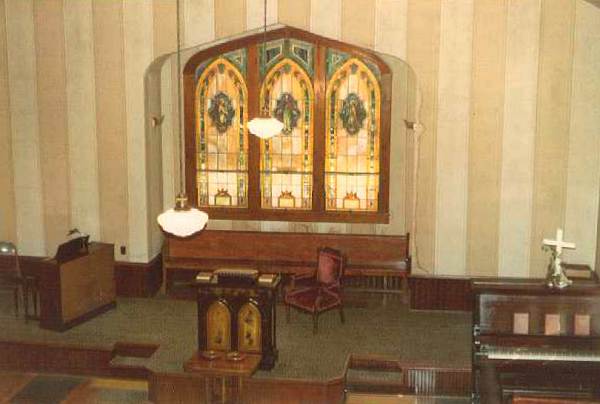
28 Stained Glass Window
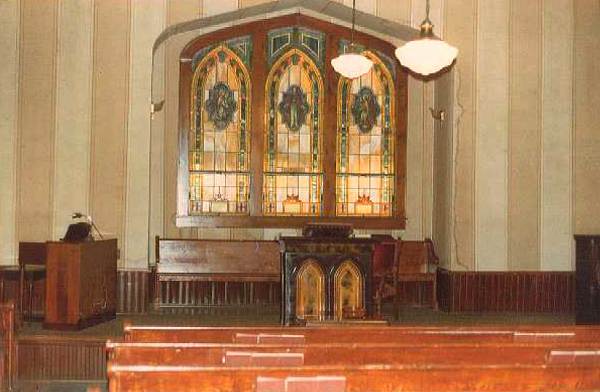
29 Stained Glass Window
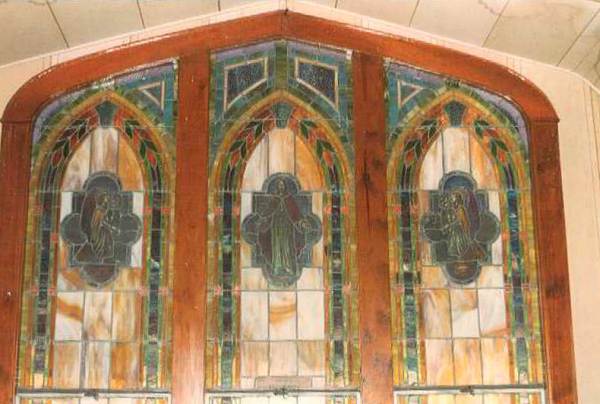
30 Stained Glass Window
That’s all for this week.
 Joe Pryor
Previous article links are in a dropdown menu at the top of all of the pages.
|

